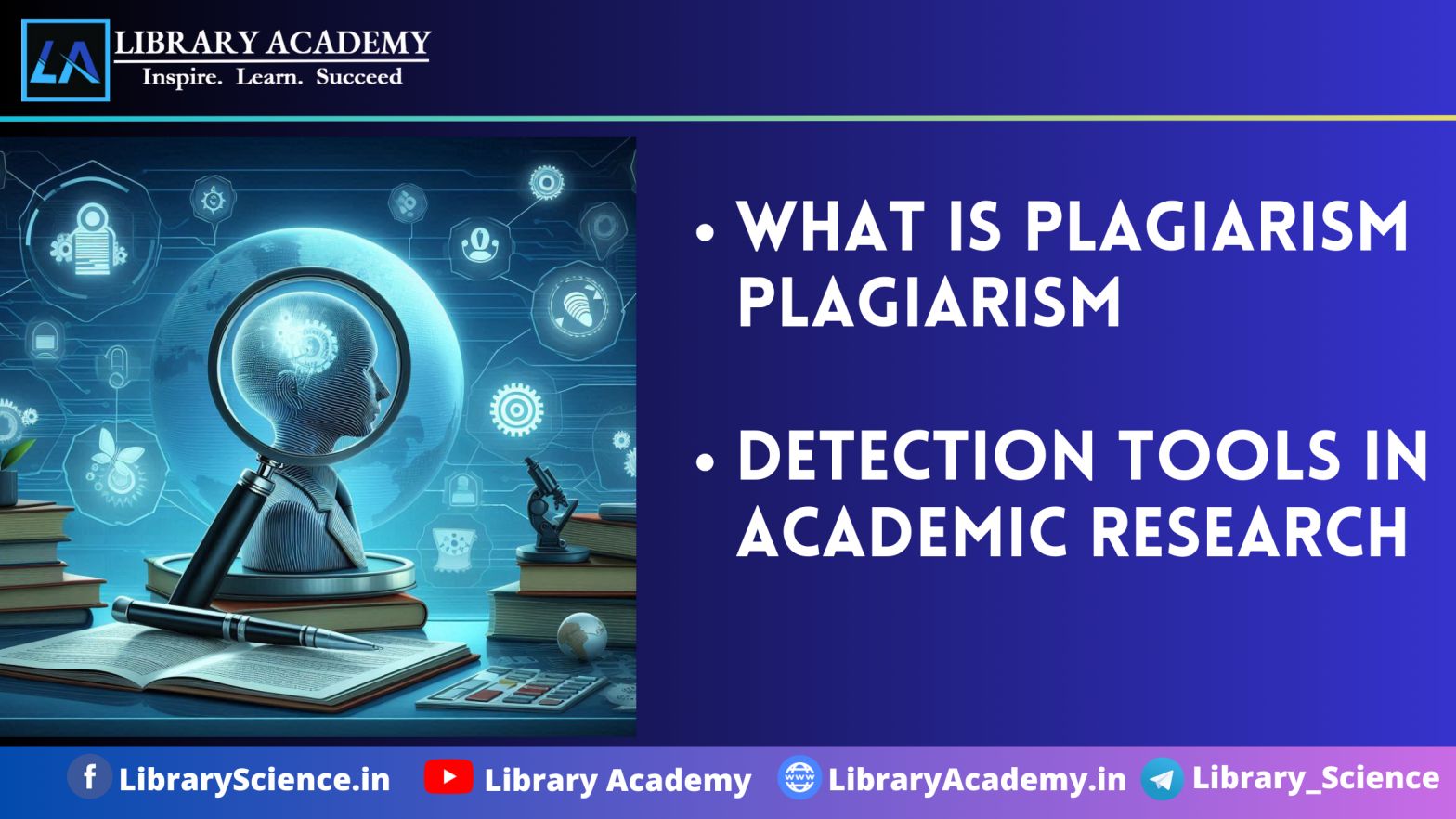What is Plagiarism, Type of Polagrism, & Plagiarism Detection Tools in Academic Research
Plagiarism in research refers to the act of using someone else’s work, ideas, or words without proper acknowledgment, presenting them as your own. It is considered a serious ethical breach in academic and research settings.
Plagiarism in research occurs when an individual claims another person’s ideas, work, or expressions as their own without proper attribution to the original source. This includes the use of words, information, or concepts from a source without appropriate citation. Plagiarism may be either intentional or unintentional.
Plagiarism is considered unethical and can have serious consequences in academic, professional, and creative fields.
Types of Plagiarism in Research
1. Direct Plagiarism: This occurs when a researcher copies text or other material directly from a source without any changes and fails to credit the original source.
Example: A researcher includes a paragraph from another academic paper in their own work without quotation marks or citations.
2. Indirect Plagiarism / Paraphrasing Plagiarism: Indirect Plagiarism occurs when a researcher rephrases someone else’s ideas or work without giving proper credit. Even if the wording is changed, if the original idea is not cited, it is considered plagiarism.
Example: A researcher reads a study, rewrites the findings in their own words, and includes them in their paper without citing the original source.
3. Self-Plagiarism: This happens when a researcher reuses portions of their previously published work without acknowledging it or getting permission from the original publisher.
Example: Submitting the same research findings in multiple papers or reusing parts of a previously published paper in a new manuscript without citation.
4. Mosaic Plagiarism (or Patchwriting): This type involves borrowing phrases from a source, interspersing them within the researcher’s own writing, and failing to provide proper citation. The researcher may also mix copied material with their own commentary without proper acknowledgment.
Example: A researcher rephrases parts of an article by changing a few words or the structure but keeps the original ideas intact without citation.
5. Accidental Plagiarism: This happens when a researcher unintentionally fails to cite sources correctly, misquotes a source, or accidentally paraphrases a source too closely without giving proper credit.
Example: A researcher forgets to include a citation for a piece of information they found in a journal or incorrectly attributes a source.
6. Source-Based Plagiarism: This type involves incorrect or misleading citation of sources. It includes citing sources that are non-existent, using an incorrect source, or citing a secondary source as a primary one without acknowledgment.
Example: Citing a study that the researcher did not read directly but only referenced through another paper, without indicating that it was cited indirectly.
7. Collusion: This involves unauthorized collaboration between researchers, where they work together on a project but submit the work as their own individual effort.
Example: Two researchers co-write a paper but submit it separately under their own names without acknowledging the collaboration.
Plagiarism Detection Tools in Academic Research
To detect plagiarism, tools like Turnitin, iThenticate, Drillbit Extreme, Urkund, and Grammarly Premium are used, to help maintain academic integrity by comparing content against extensive databases. 1. Direct Plagiarism: This occurs when a researcher copies text or other material directly from a source without any changes and fails to credit the original source.
Plagiarism Detection Tools in Academic Research are software or online services designed to identify instances of plagiarism by comparing submitted content against a vast database of academic papers, publications, websites, and other sources. These tools help ensure the originality of research work, maintain academic integrity, and avoid the ethical and legal repercussions of plagiarism.
List of Popular Plagiarism Detection Tools
1. Turnitin: Turnitin is Widely used in academic institutions, Turnitin checks for plagiarism by comparing submissions against an extensive database of academic papers, journals, and web content.
Features: Detailed similarity reports, feedback tools for educators, integration with learning management systems (LMS).
2. iThenticate: Developed by the creators of Turnitin, iThenticate is primarily used by researchers, publishers, and institutions to detect plagiarism in manuscripts and research papers.
Features: Comprehensive database, detailed reports, integration with editorial workflows, used by publishers and grant agencies.
3. Drillbit Extreme: Drillbit Extreme is a plagiarism detection tool that is designed specifically for academic institutions and researchers. It helps in identifying potential plagiarism by comparing submitted content against a vast database of academic publications, web content, and other sources. Drillbit Extreme is known for its accuracy and comprehensive reporting features, making it a valuable resource for maintaining academic integrity.
Tagline: A plagiarism checker that reads between the lines
4. Urkund: A plagiarism detection tool widely used in European institutions, Urkund checks documents against a large database of academic and web content.
Features: Integration with LMS, detailed reports, multi-language support.
5. Grammarly Premium: It is Known primarily for grammar and style checking, Grammarly Premium also includes a plagiarism detection feature.
Features: Checks content against billions of web pages and academic papers, provides grammar and style suggestions.
Summary: Plagiarism in research involves using someone else’s work or ideas without proper attribution. It includes various types such as direct, indirect, self-plagiarism, mosaic, accidental, source-based, and collusion. To detect plagiarism, tools like Turnitin, iThenticate, Drillbit Extreme, Urkund, and Grammarly Premium are used, to help maintain academic integrity by comparing content against extensive databases.
Reference:
- University of Oxford
- Harvard University
- Drillbit Plagiarism Detection Tool
- Turnitin
- iThenticate
 Subscribe YouTube Channel
Subscribe YouTube Channel

